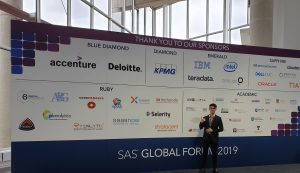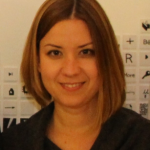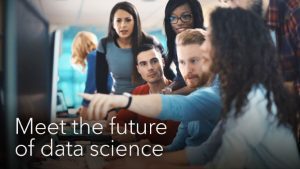 This post is the second in our Young Data Scientists series, featuring the motivations, work and advice of the next generation of data scientists. Be sure to check back for future posts, or read the whole series by clicking on the image to the right.
This post is the second in our Young Data Scientists series, featuring the motivations, work and advice of the next generation of data scientists. Be sure to check back for future posts, or read the whole series by clicking on the image to the right.
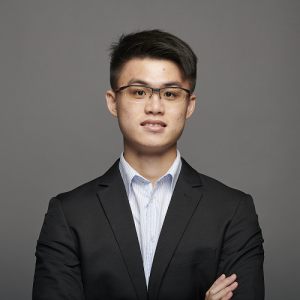 Kai Woon Goh is a PhD Student at Universiti Teknologi Malaysia and was a presenter at the 2019 SAS Global Forum. He holds a degree in Mechatronics Engineering and is passionate in the fields of analytics, robotics and augmented reality (AR). His latest work involves a joint effort with SAS Malaysia to develop a predictive maintenance system for robots.
Kai Woon Goh is a PhD Student at Universiti Teknologi Malaysia and was a presenter at the 2019 SAS Global Forum. He holds a degree in Mechatronics Engineering and is passionate in the fields of analytics, robotics and augmented reality (AR). His latest work involves a joint effort with SAS Malaysia to develop a predictive maintenance system for robots.
Can you describe how it all began for you and what attracted you to data science?
During my third year of undergraduate study at the University of Technology Malaysia (UTM), I participated in a data analytics boot camp. During the boot camp, I saw first-hand how data science can be a game changer for all industries, especially with the technology advancements in big data analytics and the IoT (Internet of Things). As a student, this inspired and encouraged me to gain data analytics skills to solve real industry problems.
Since graduation, I’ve been working on data analytics projects with SAS Malaysia and participated in SAS Global Forum 2019. During the conference, I got to see numerous data science projects from all around the world, and that further opened my eyes to how data science can contribute and change the world in health care, manufacturing, energy and utilities and more. I’m excited to progress further in data science to help industries in Malaysia get value from their tremendous collection of raw data. Currently, I’m working on my PhD and am working with local businesses on data analytics projects.
You worked on some exciting projects at the University. Can you tell us more about them?
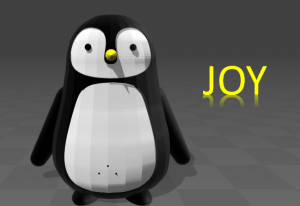 During my studies at UTM, I worked on some interesting team projects, one of them was to design a robot, “JOY” that can diagnose some simple health symptoms of elderly people and talk to them when they’re lonely. Image processing is used to detect the user’s heart rate of the user, and speech analysis is used to diagnose the user’s current health.
During my studies at UTM, I worked on some interesting team projects, one of them was to design a robot, “JOY” that can diagnose some simple health symptoms of elderly people and talk to them when they’re lonely. Image processing is used to detect the user’s heart rate of the user, and speech analysis is used to diagnose the user’s current health.
With the world on lockdown, and since the elderly are most affected both by COVID-19 and feelings of isolation, projects like this could help preserve the physical and mental health of our elderly citizens. Here’s a YouTube video about the JOY project.
I’ve also been designing a predictive maintenance solution for industrial mobile robots such as automated guided vehicles (AGV) aided with an augmented reality (AR) application.
Our goal is to translate the raw data from the robot’s sensors to use machine learning models to make real-time predictions of fault and the remaining useful lifetime of the robot. AR will be used to guide the engineers in troubleshooting the robot with the aid of graphical interactions.
This project is a joint effort with SAS Malaysia and was developed using SAS Viya and SAS Event Stream Processing. The project was presented at SAS Global Forum 2019 in Dallas, and you can see the paper here.

What are you planning to focus on in the next five years?
The Artificial Intelligence of Things (AIoT) and augmented reality are the areas of data science that I’m most interested in.
There are AIoT companies popping up throughout Malaysia. Fusionex is one of them and they’re focused on providing analytics, big data, machine learning and artificial intelligence solutions. Their solutions cover many sectors, ranging from education, banking, manufacturing and even smart city.
There are also AIoT start-ups, such as Ombré, an app that uses AI to give professional fashion advice to users. AIoT has emerged in many different industries in Malaysia, but may focus more on manufacturing (process optimization), health care (integration of bio sensors), agriculture (smart farming) and e-commerce.
For the development of AR solutions, VirtualX is a good example of how Malaysia is catching up with the new wave of reality technology. The VirtualX team are experts in AR and are able to provide various virtual experiences combining virtual reality and augmented reality, such as 360° tours.
For now, most of the VR/AR startups in Malaysia, including VirtualX, are still focusing on education (the International Medical University uses AR to teach their dental classes) and industrial training (Petronas, Malaysia's petroleum corporation uses VR to provide offshore training to employees).
However, I believe the development on AR will slowly take off in other fields, including manufacturing for predictive maintenance and health care for telemedicine applications.
What excites you about the future?
I am excited about the technological advances in data science and AI all around the world. A recent report stated that data mining, advanced algorithms and predictive analytics are among the highest-priority projects for enterprises adopting AI and machine learning. As the technology advances with 5G technology and enhanced computing capabilities, there are much greater achievements ahead in data science.
My career goal is to play a role in facilitating the data revolution for Malaysia’s industries. As the saying goes, “Data is the new science. Big data holds the answer!”
